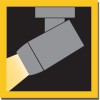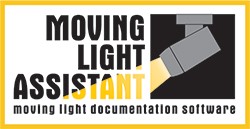
The main interface of the Report Designer has three main areas: The Object List, the Designer, and the Property List. Each one is described below.
Object List
The object list has four sections with items for reporting.
Objects

The first section is the static objects list. These objects can be dragged into the designer (or double click to insert into the body band). Items added to the report from the static objects list do not change with data being run; use them for headers, labels, and other information that should remain static. Use decorative objects like lines and rectangles to visually group report data.
Constants
These are placeholders for text that will be substituted at runtime using a simple Key/Value pair. Use the Designer Constants editor to add constants and their runtime values. The point of constants is to give the user the ability substitute in data that is not part of the data source at runtime. An example of this might be who is running the report or which computer generated the report.
Built-in Constants
The Report Designer has some placeholders for enhancing headers and footers on your reports. The timesamp will be formatted as selected in the Report Designer preferences.
| // | Timestamp |
| #### | Page Number |
| %%%% | Page Count |
Tables

This section contains all of the Tables available for the report type (data source) sorted by name. Each table can be expanded with the disclosure triangle to shows all of the fields that are in table. To add a field to the designer either drag it from the list to the desired position, or double click to insert at the top of the body band. The newly added item is automatically selected and any properties are shown in the Properties List.
Views
A views section will appear if the data source has any views. It works the same as the Tables section. Moving Light Assistant does not currently implement any views.
Report

This section contains the objects that are on the report organized by band. Items in the Report Objects List show their UID and type. This section aids in selecting items on the report, which is especially helpful for small or lost items.
Designer
The Designer is where all of the action takes place. All reports have a minimum of five bands: Report Header, Page Header, Body, Page Footer, and Report Footer. Bands with no objects will be automatically hidden when the report is run, and will not take up space. Additional bands can be added by using the Band Editor to add break bands. Break bands are ways to group data from the data source.
Report Header
This band is only displayed once as the first thing before all other bands. When the Report Header band is set to Page Break, this could be used to be a cover sheet for the report.
Page Header
This band is displayed at the top of each page generated by the report.
Body
This band is for each row of data to be displayed in the report. For example, a row could be a channel of rig data.
Page Footer
This band is displayed at the bottom of each page. Typically this may include the date printed and page number.
Report Footer
This band is the last thing added after all the body rows and page footer.
Bands are logical entities that represent sections of the report. Report objects are added to bands. Bands have properties that can be accessed by selecting the band in the Object List or clicking in space not occupied by a report object. Use Band properties to hide an entire band, add band scripts, or alter the appearance of the band. To resize a band click and drag on the tan band edge. The band edge does not count as height in the report, it is simply a visual aid to “grab” the band in the designer.
Objects are used on bands to make up the report. Click an object to see it’s properties in the Property List. Objects can be resized using the handles or by tweaking the properties in the Property List.
To select multiple objects click and drag to create a selection rectangle, each item inside the selection rectangle will become selected. Alternatively, holding shift and clicking on multiple items will create a multiple item selection. Multiple item selections can be dragged and repositioned, but at this time properties they have in common can not be edited together.
Property List
The Property List reflects the properties of the currently selected object. This allows the user to change those properties whether they be text, numbers, boolean values, and dropdown values. Property changes are undoable.



